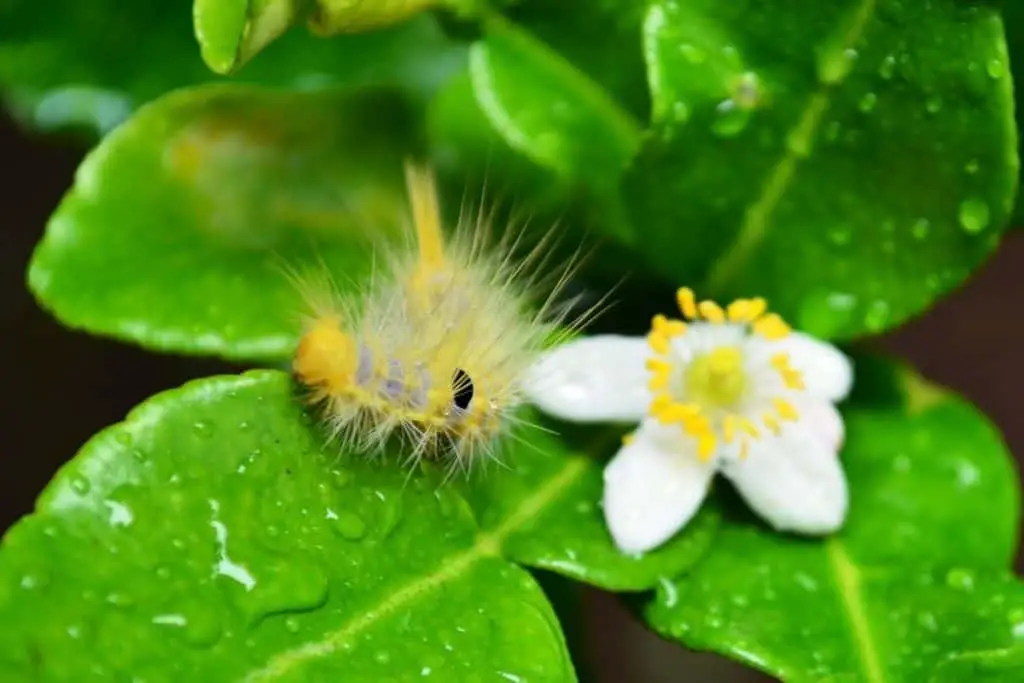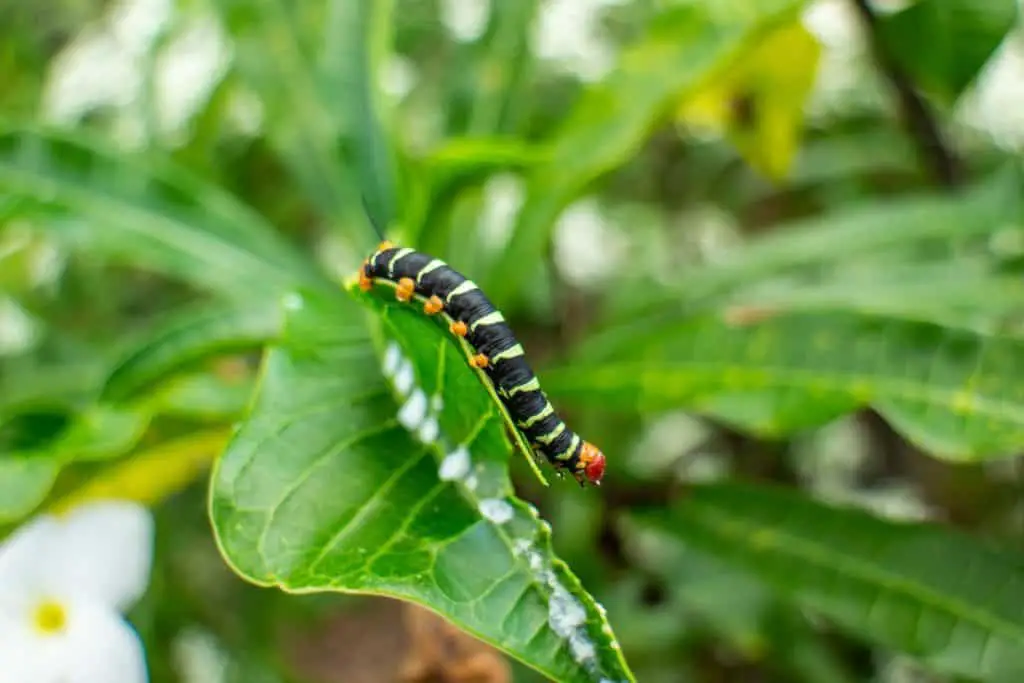Caterpillars are one of the most recognizable insects in the world, with their soft bodies and numerous, spiky legs it’s no wonder people have such a fascination with caterpillars.
They can be found in a variety of different environments, typically areas that have plenty of plants, trees, and grass.
However, caterpillars are also known for their voracious appetite for leafy plants and vegetation! In fact, some caterpillars are able to eat so much that they’re capable of doubling their body mass in just a few days.
But, with all this eating have you ever seen a caterpillars drink water? Do they even need water to survive?
Yes, caterpillars do need water to survive! However, they don’t actively seek out water or drink water as we do, instead, caterpillars rely on the plants they eat to stay hydrated!
With that said, there are some species that get additional moisture from other sources such as raindrops or small puddles.
What Types Of Water Do Caterpillars Drink?
There are many different types of caterpillars, and they all have different dietary needs. This also means that they can drink different types of fluids.
Some caterpillar species feed on plant leaves and vegetables that contain a lot of moisture and juices. Yet others will drink directly from tiny puddles or water collected on the leaves.
Overall the types of moisture caterpillars absorb include:
- Rainwater
- Plant Sap
- Vegetable Juices
Vegetables imparticular contain high amounts of nutrients that the caterpillar can extract from the leaves giving them a huge boost of hydration and nutrition.
This is why you see a lot of caterpillars feeding on vegetables, like cabbage and lettuce!
Take green cabbage, for example, this type of vegetable is made up of 93 percent water, making it the perfect food source for caterpillars!
Some caterpillars will also drink water from droplets on the surface of the leaves.
In fact, certain plants that absorb too much water through their roots will produce droplets on the leaves called “guttation“.
This creates pressure that forces the moisture to exude through its leaves.
The caterpillar will then drink these droplets keeping it hydrated.

In drier climates, some caterpillar species may need more moisture and will drink from small puddles or raindrops that are usually collected on leaves.
In general, though, most caterpillars are highly adapted to getting the water they need from their food sources.
Related Article:
How Can You Tell If A Caterpillar Needs Water?
If you’ve recently found a caterpillar in your garden and are trying to get it back to good health, there are a few different things you can look for to determine if the caterpillar is dehydrated.
Some signs to look out for include:
- Drooping body
- Skin Looks Dry
- Curled up into a ball
- Sluggish movement
- Sunken appearance
One of the most obvious signs that a caterpillar needs water is if it’s struggling to move! Although caterpillars do move very slowly you will notice the difference.
Additionally, you may notice that the caterpillar’s skin looks dry or is not eating as it should be.
From the moment caterpillars hatch, they will eat continuously, to build up the energy they need to turn into butterflies later on. So if it’s not eating this could be a sign of dehydration.
Another sign that your caterpillar needs water is if it has started to curl up into a ball or become very still and inactive.
If you notice these symptoms, try adding a few drops of water around the caterpillar. Or try lightly misting them with water from a spray bottle this should help rehydrate their skin.

Are There Any Dangers Associated With Giving Caterpillars Water?
While it is important to ensure that your caterpillar has access to water, there are a few things you should keep in mind when doing so.
First of all, for some species giving them too much water can actually be harmful, since it can throw off their food balance.
Additionally, if you are giving your caterpillars water from a spray bottle, be sure to make the mist very light and not too wet or heavy.
Another potential danger of giving caterpillars water is that they could accidentally drown!
If you are providing your caterpillar with a shallow dish or container of water, be sure to keep an eye on them and remove any excess liquid as soon as possible.
Related Article:
How Can You Provide Water To Caterpillars Without Harming Them?
There are a few different ways that you can provide water to caterpillars without putting them at risk.
- Lightly mist the skin of the caterpillar
- Place a few drops of water around the caterpillar
- Try Feeding the caterpillar some cabbage
The first is to lightly mist the skin of the caterpillar with a spray bottle, making sure not to saturate them too much. If you don’t have a spray bottle you can try adding a few drops of water around it instead.
However, if the caterpillar is moving then you can try and feed them leaves instead.
Your best option would be cabbage since this veg is very high in water, and will help hydrate your caterpillar without risking its health.
By following these tips and keeping a close eye on your caterpillars, you can ensure that they stay healthy and hydrated while they grow into beautiful butterflies.
Can You Feed Caterpillars Sugar Water?
There is some debate around whether or not it is safe to feed caterpillars sugar water. Some sources suggest that while the sugar itself can be harmful, eating the sweet nectar from flowers and plants will provide them with the extra energy they need to stay hydrated.
Others caution against feeding caterpillars anything other than their natural food source as this could cause digestive issues and change their diet preferences.
Ultimately, whether or not you decide to give your caterpillars sugar water will depend on a number of different factors, including their age and species.
In the end, it’s best to stick with what they know and only provide sugar water as a last resort.
However, if you do choose to give your caterpillars sugar water, be sure to monitor their behavior closely and watch for any signs of problems.
Conclusion
So the bottom line is caterpillars need water in order to survive and thrive. However, they don’t actively look for water instead they absorb it from the plants they eat.
If you are taking care of one just providing it with fresh vegetables like cabbage or lettuce should be enough to keep it hydrated.
Related Article:
